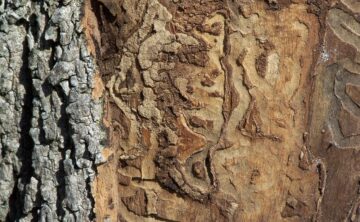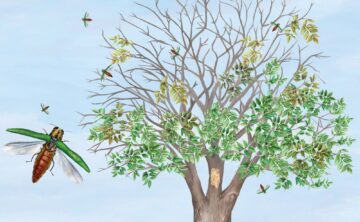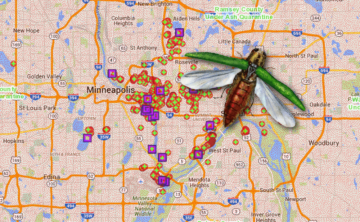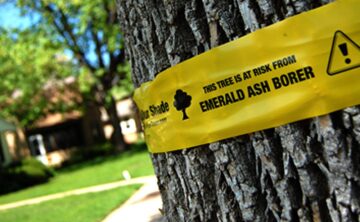Does Extreme Cold Kill Emerald Ash Borer?
With the extremely cold temperatures we endure in the Minneapolis and St. Paul metro area, you may wonder if the extreme cold kills emerald ash borer. Sadly, the answer is no. While the sub-zero temperatures may kill off some EAB, not enough insects were killed to justify ending protective treatments.

How does EAB survive the winter?
Is there any good news?
Minnesota winters and polar vortex events could be seen as a helpful bonus in EAB management. However, easing up on preventative treatments in the hope that extreme weather will take care of EAB would be a mistake. According to the MN DNR, “While frigid winter temperatures may be an added benefit for now, we should not allow the cold to give us a false sense of security when it comes to actively managing Minnesota’s ash resource.”
On the bright side, extreme cold may give Minnesota a slight advantage in preserving ash trees. Continued treatment will be even more effective in dealing with an EAB population that has been weakened or reduced. On the other hand, as an invasive species, EAB enjoys many advantages, such as a lack of natural predators. If left unchecked, its population can bounce back leaving high-value ash trees just as vulnerable as they were before.

What can I do about EAB?
- Avoid spreading EAB—never transport ash logs, lumber, brush, or wood chips from a quarantined into a non-quarantined area.
- Consult a licensed arborist—see if your ash tree is a good candidate for treatment, or removal and replanting with another species.
- Contact your City Forester—ask if they have an EAB management plan, or click here to see if you live in one of Rainbow Treecare’s Partner Cities.
Rainbow Treecare can evaluate your ash tree and make recommendations on treatment or removal!
Other items you may be interested in:

Emerald Ash Borer
Save Your Tree: Treatment for Emerald Ash Borer If you live in the Minneapolis & St. Paul metro, there is a good chance you have

City Partnerships
Minnesota Partnerships & Discounted Emerald Ash Borer Treatments As of January 2023, Rainbow Treecare has partnered with over 35 cities throughout the Twin Cities to

Emerald Ash Borer (EAB) in Minnesota Report for 2022
What is the status of Emerald Ash Borer in Minnesota? As of May 2022, EAB has been found in 40 counties across the state of



